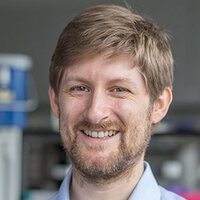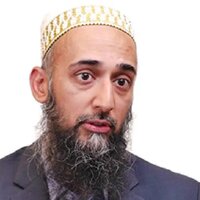Immune response to KRAS inhibition
Both researchers are members of the Oncogene Biology Laboratory run by Julian Downward, PhD, at The Francis Crick Institute. The lab is focused on oncogenic KRAS signaling, particularly in the context of lung cancer.

Building an effective pipeline
A vast amount of knowledge regarding the human immune system remains undiscovered. Why do some get sick when others don’t? Why are there such big differences in cancer diagnosis and progression among patients? What makes immunotherapy treatment work for one person but not another?
Realization about the diversity of cells that make up the immune system is only the beginning of the journey. With advancing technologies that allow us to see into microenvironments down to the single cell, recognition that there is much more to learn has driven scientists to ask harder questions and explore whole systems, integrating the pieces until a broader framework comes to light.
Febe van Maldegem, PhD, and Karishma Valand took the opportunity to apply a new technology to a difficult question, leading to further method advancement and novel insights into the mechanism of immunotherapy efficacy.
Both researchers are members of the Oncogene Biology Laboratory run by Julian Downward, PhD, at The Francis Crick Institute. The lab is focused on oncogenic KRAS signaling, particularly in the context of lung cancer. “KRAS is mutated in about 25% of all non-small cell lung cancers,” explains van Maldegem. “When I joined the lab, immunotherapy was just starting to become a treatment for lung cancer, so we wanted to understand more about the relationship of lung cancer to the immune system and what creates a therapeutic response.”
Initially, the group used flow cytometry to characterize the tumor microenvironment in different mouse models. Van Maldegem had been developing mouse tumor models for lung cancer with varying levels of immunogenicity as a means to test different systems and examine how tumor cells interact with infiltrating and surrounding cells. But she wanted to learn more.
“Once the Crick acquired the Hyperion™ Imaging System, we took the opportunity to use that,” she says. “Starting with flow cytometry enabled us to already have markers to build a panel. And with Imaging Mass Cytometry™ (IMC™), we could build just one panel instead of our usual three. While we were used to looking at large collections of cells, extending our knowledge to include where the cells are in the tissue was of great interest. So it was key to have many markers and look at all the markers in the cells at the same time.”
Extending our knowledge to include where the cells are in the tissue was of great interest. So it was key to have many markers and look at all the markers in the cells at the same time. ”
– Febe van Maldegem
Imaging Mass Cytometry and mouse modeling
Because they were one of the first adopters of IMC at the Crick, and also were getting set up to use mouse models, team members had to develop everything from scratch.
When creating their IMC panel, antibodies they had already validated for flow cytometry were a good place to start because they used fresh frozen tissue sections in which most epitopes are maintained in a native state. Valand notes that “we used immunofluorescence to test clones we already were using with cells in solution for flow cytometry. For many of the antibodies that we validated, we were able to order the same clones from the … Helios catalogue and used them for IMC.”
A mouse model offers a complete systemic representation that cannot be investigated in humans. When van Maldegem and Valand were ready to image their samples, they took that holistic approach by imaging whole tumors including the healthy adjacent tissue. The ability to collect information about different areas of the same tumor and compare similar areas across tumors provided a more comprehensive overview of cell behavior and tissue architecture.
“We didn’t want to miss any changes or interactions across samples, and we learned that this was a big roadblock with other systems. With IMC, we could image our samples using more markers, allowing us to learn more from each area,” says Valand.
They questioned how the tumor cells and immune cells interact and what it is about these interactions that determines the response to therapies. Examination of the whole story could allow direct comparison of cell types and spatial architecture and movement, something they had not been able to do before.
“It was beautiful to see the tumor with the normal tissue surrounding it and the way the cells were organized in the tissue. That was really an eye opener, and so using IMC became the default,” adds van Maldegem.
With IMC, we could image our samples using more markers, allowing us to learn more from each area. ... It was beautiful to see the tumor with the normal tissue surrounding it and the way the cells were organized in the tissue. ”
– Karishma Valand
Hackathon success
With more samples and the ability to incorporate more markers comes more data and thus larger datasets. Valand started off with the recommended analysis pipeline using CellProfiler™ for single cell segmentation, and then incorporated ilastik for pixel classification. The large amount of data the team was generating prompted them to seek additional support for analysis.
As fortune would have it, the Crick was advertising for the first ‘data challenge’ where labs can present an issue and are paired with bioinformatics groups to help develop creative solutions. Van Maldegem and Valand were looking to create an automated segmentation pipeline that enabled individual plug-ins that could be easily customizable and moved in or out of an analysis workflow.
“It was a real game changer for us because now we could run a whole cohort in one go, instead of manually dragging input files in and out of multiple software. The new approach, once optimized for the cohort, permitted us to run images directly from the Hyperion and get single cell expression data out in the form of a spreadsheet. That was a big advantage for us,” explains Valand.
The new automated pipeline was flexible enough to allow the team to edit which plug ins were needed, optimize settings specific to the samples and automatically run from the original file straight to segmented images.
The creativity and ability to look beyond what had already been done led van Maldegem and Valand to rethink an approach that could provide new information. The use of IMC, the creation of a new antibody panel and the automated analysis pipeline brought together a whole methodology that will make this type of investigation more accessible for other scientists to use IMC in their preclinical research.
Therapy impact on tumor microenvironment
Most important, the methodology offered valuable insights into the behavior of immune cells in their response to cancer therapy. The group was able to see dramatic remodeling of the tumor microenvironment when inhibiting KRAS in the tumor cells specifically, using novel KRAS G12C inhibitors. At a basic level, lung tumors are incredibly immune-evasive because they are very efficient at excluding immune cells from infiltrating the tumor itself.
This leaves what would be effective immune cells at the tumor periphery. When the tumors are then treated with the inhibitor, more cytotoxic T cells are able to move into the tumor core. Furthermore, they identified macrophages changing to a mature phenotype and appearing as active antigen-presenting cells. These adjustments within the tumor microenvironment could lead to a better response to immunotherapy.
“We've shed some light on what is happening when tumors are being treated with a therapy specifically focusing on KRAS signaling, and how important it is in orchestrating the immune suppressive microenvironment,” concludes van Maldegem.
It was a real game changer for us because now we could run a whole cohort in one go, instead of manually dragging input files in and out of multiple software. he new approach, once optimized for the cohort, permitted us to run images directly from the Hyperion and get single cell expression data out in the form of a spreadsheet. That was a big advantage for us ”
– Karishma Valand
Spatial biology is key
Based on her experience with creating such a usable and information-rich approach, van Maldegem suggests paying close attention to segmentation results. “This initial step can really influence the quality of the downstream data. If you get that right, you will get beautiful data. And I think that's quite an important message.”
IMC was chosen “because of the spatial information that you get from it.” For example, the team had already seen several macrophage populations with their original flow cytometry studies, but there was no clarity about their dynamics and what their role could be. Only once they saw how these cells were arranged in tumors, with one population being in the tumor and one at the periphery, were they better able to deduce their roles and interactions. It’s the cellular neighborhood and where they are that is important, not necessarily the quantity of cells.
Future experiments will involve confirming what they found in these mouse models, and also further integrating the vast IMC data with other multi-omics.
Customer Stories
Febe van Maldegem, PhD, and Karishma Valand

Imaging the dramatic remodeling of the lung tumor microenvironment
Corinne Ramos, PhD, MBA

Advancing drug development with molecular imaging
Jana Fischer, PhD

Paving a new road for spatial biology in precision medicine
Yongpan Yan, PhD

An approach that combines molecular biology, immunology and cell biology tools to uniquely
Melissa Davis, PhD

Defining spatial characteristics using Imaging Mass Cytometry
Rebecca Ihrie, PhD

How CyTOF technology enabled a look into the heterogeneity of glioblastoma.
Xianting Ding, PhD

High-dimensional single-cell analysis enhances precision medicine
Dr. Dexi Chen, PhD, MD

Achieving multi-omic insights with microfluidics and CyTOF technology
Denis Schapiro, PhD

The interactive histoCAT toolbox unifies the cytometry and imaging communities
Bernd Bodenmiller, PhD

Bernd Bodenmiller on revealing new insights into tumors with Imaging Mass Cytometry
David L. Rimm, MD, PhD

David Rimm on the value of Imaging Mass Cytometry for immunology applications at Yale
Akil Merchant, MD

Hear how researchers are using Imaging Mass Cytometry.
Hartland Jackson, PhD

Entering an era of new biology
Daniel Schulz, PhD

Discovering a chemokine’s purpose in fighting tumors using RNA and protein co-detection
For Research Use Only. Not for use in diagnostic procedures. Patent and License Information: www.standardbio.com/legal/notices. Trademarks: www.standardbio.com/legal/trademarks. Any other trademarks are the sole property of their respective owners. ©2025 Standard BioTools Inc. All rights reserved.
